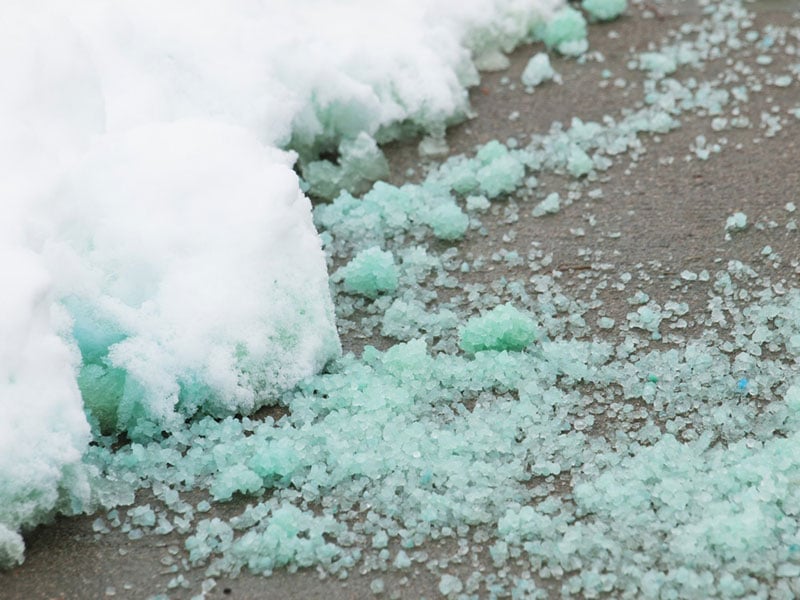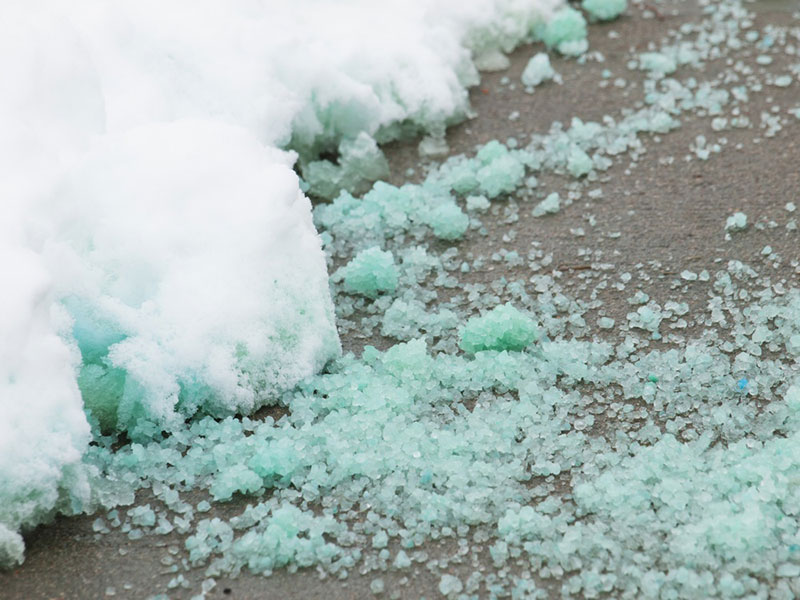
When used correctly, ice melt can be a beneficial product that keeps ice under control at your facility and can aid in reducing the chance for slips and falls.
Here are some great tips to help you utilize ice melt while caring for your floors and concrete.
1. Ice Melt Tips
• Make sure the proper amount of ice melt is being applied. Oftentimes, ice melt/residue will track into a building if it is being over applied. Make sure to read and follow application rates. You could also purchase an ice melt with a colored coverage indicator to help apply the correct amount.
• If you have a tight budget but need an ice melt that will perform at lower temperatures, use a high performance and low cost blend.
• If you have a large parking lot that must stay relatively clear but you also have budget constraints, use a product with an accelerator.
• If you have new concrete, make sure it’s at least one year old before you use any ice melt. Concrete needs a minimum of one year to fully cure. The freeze/thaw cycles that occur in winter are stressful to new concrete, and the use of an ice melt could potentially accelerate these cycles and cause the concrete to sprawl and flake.
2. Floor Care Tips
• Sweep away excess ice melt from outdoor entrances as soon as the snow and ice have melted for that occurrence. This will help minimize the amount of ice melt being tracked into your building.
• To remove any ice melt residues found on hard surfaces or carpets, use a carpet and hard floor neutralizer.
• For floors that can be burnished, increase burnishing frequency during the winter season. Burnishing will smooth out the scratches that can become more prevalent in floors during the winter. Smooth floors can also reduce the areas where particulates can settle.
3. Matting Tips
The Carpet & Rug Institute recommends 12-15 feet of matting at building entries.
3-Mat System:
Scraper Mat – A mat, such as the Super Scrape from Andersen, that is generally used outside to remove heavy soil and moisture.
Scraper/Wiper Mat – Used in the vestibule or right inside the door to remove medium to heavy soil and moisture. Bi-level construction as found in the Andersen WaterHog® mats is best so that it traps the soil and moisture below the top surface.
Wiper Mat – Use in interior spaces of buildings. Stops light soil and moisture. An example would be the Andersen Stylist.
Should space be limited and a 3-mat system will not fit, the best overall performance choice is a Scraper/Wiper Mat.







